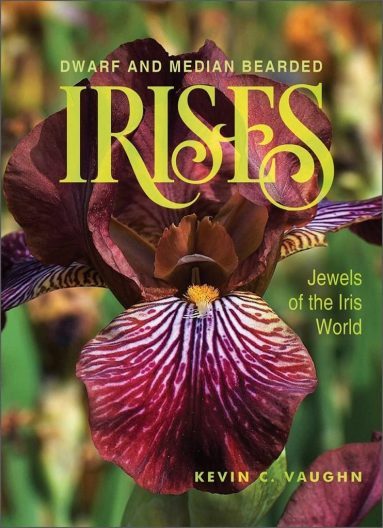 Kevin Vaughn is an active grower and breeder of iris in Oregon. His newest book, “Dwarf and Median Bearded Iris” focuses on the development of varieties smaller than the more familiar tall bearded selections. These are very useful garden plants, as they do not dominate their setting or requiring the staking often needed by their taller cousins. The history of their development may be of interest only to the most devoted iris fan (yes, I’m guilty as charged), but the author balances this with innovative planting designs and good suggestions for companion plants. He also names his favorite varieties and many are available from one of the several iris gardens in our region.
Kevin Vaughn is an active grower and breeder of iris in Oregon. His newest book, “Dwarf and Median Bearded Iris” focuses on the development of varieties smaller than the more familiar tall bearded selections. These are very useful garden plants, as they do not dominate their setting or requiring the staking often needed by their taller cousins. The history of their development may be of interest only to the most devoted iris fan (yes, I’m guilty as charged), but the author balances this with innovative planting designs and good suggestions for companion plants. He also names his favorite varieties and many are available from one of the several iris gardens in our region.
Long-time Arboretum Foundation members will remember Jean Witt (1921-2016), who was the widow of Joe Witt after whom the Winter Garden is named. Jean was also well known as an iris breeder, and especially of the medium size varieties. Until reading this book, I didn’t realize how instrumental she was in the creation of these classes that were only recognized and defined in the mid-20th century. New varieties from her breeding have continued to be introduced on her behalf up until the last few years. One of my favorites is ‘Little White Tiger’ from 2009.
Excerpted from Brian Thompson’s article in the Spring 2023 issue of the Arboretum Bulletin
 Holden Village is a Lutheran community center deep in the Cascade Mountains, accessible only by a boat ride on Lake Chelan followed by a bus ride on a mountain road. At 3,000 feet, it is very cold and snowy in the winter, and cut off from Wi-Fi and cell phone reception.
Holden Village is a Lutheran community center deep in the Cascade Mountains, accessible only by a boat ride on Lake Chelan followed by a bus ride on a mountain road. At 3,000 feet, it is very cold and snowy in the winter, and cut off from Wi-Fi and cell phone reception.